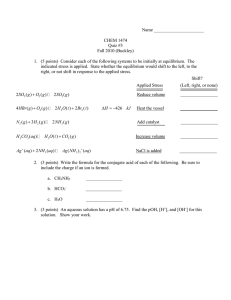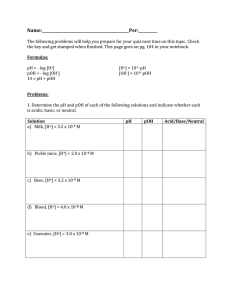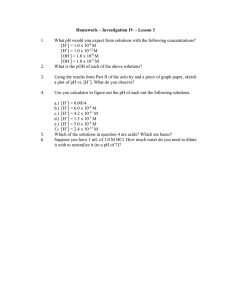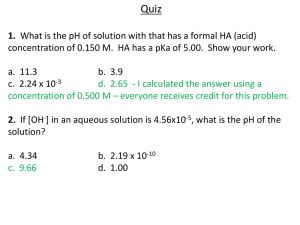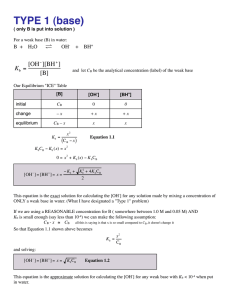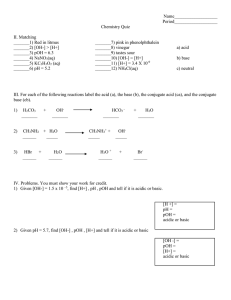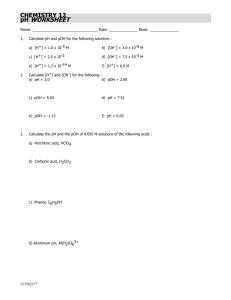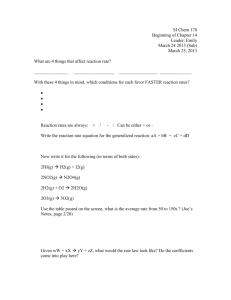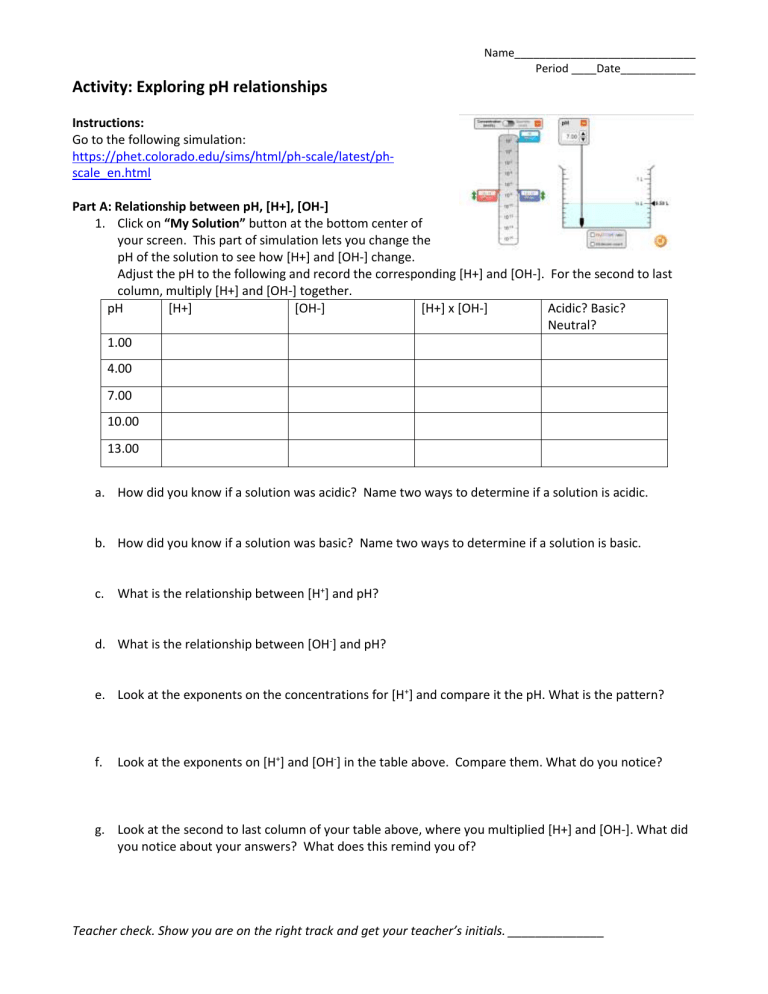
Name_____________________________
Period ____Date____________
Activity: Exploring pH relationships
Instructions:
Go to the following simulation:
https://phet.colorado.edu/sims/html/ph-scale/latest/phscale_en.html
Part A: Relationship between pH, [H+], [OH-]
1. Click on “My Solution” button at the bottom center of
your screen. This part of simulation lets you change the
pH of the solution to see how [H+] and [OH-] change.
Adjust the pH to the following and record the corresponding [H+] and [OH-]. For the second to last
column, multiply [H+] and [OH-] together.
pH
[H+]
[OH-]
[H+] x [OH-]
Acidic? Basic?
Neutral?
1.00
4.00
7.00
10.00
13.00
a. How did you know if a solution was acidic? Name two ways to determine if a solution is acidic.
b. How did you know if a solution was basic? Name two ways to determine if a solution is basic.
c. What is the relationship between [H+] and pH?
d. What is the relationship between [OH-] and pH?
e. Look at the exponents on the concentrations for [H+] and compare it the pH. What is the pattern?
f.
Look at the exponents on [H+] and [OH-] in the table above. Compare them. What do you notice?
g. Look at the second to last column of your table above, where you multiplied [H+] and [OH-]. What did
you notice about your answers? What does this remind you of?
Teacher check. Show you are on the right track and get your teacher’s initials. ______________
2. Now use the simulation to fill in the table below and answer the questions. For the second to last
column, multiply [H+] and [OH-] together.
pH
[H+]
[OH-]
[H+] x [OH-]
Acidic, Basic, or
Neutral
2.99
4.95
8.05
10.23
a. Is the relationship between [H+] and pH still the same as the previous table?
b. Is the product of [H+] and [OH-] still the same as the previous table?
c. How does this table and the previous one differ?
Part B: The Power of Hydrogen – Read carefully
The term pH stands for the power (as in exponent) of hydrogen. Exponential functions in math are related to
logarithmic functions. Therefore, the relationship between {H+] and pH is a logarithmic function
mathematically speaking.
If you are given [H+], you can calculate pH using: pH = - log10[H+]
(note the negative sign)
Example:
If you were give the [H+] = 1.0 x 10-2 M, the pH would the negative of that exponent which would be “2”.
But the [H+] isn’t always so perfect that you wouldn’t need a calculator. Locate the log function on your
calculator and try the following.
Determine the pH of a solution whose [H+] is 5.00 x 10-12 M. Show your work.
Use the simulation to check your answer by dragging the [H+] slider to this concentration and seeing
what the pH is.
If you are given pH, you can calculate [H+] using: [H+] = 10-pH
(note the negative sign)
Example: If you were give the pH of 3.00. The [H+] would be 10-3 which we would write as 1 x 10-3 M.
But pH is not always a nice number like that you wouldn’t ever need a calculator. Locate the 10x button on
your calculator and try the following.
Determine the [H+] concentration of a solution with a pH of 3.45. You must write this answer in
proper scientific notation where the exponent is a whole number.
Use the simulation to check your answer by setting the pH and then noting the [H+]
Part C: pOH – The Power of Hydroxide
We can also calculate pOH in a similar way. Furthermore, the sum of pH and pOH will always equal 14 because
[H+] x [OH-] always equals 1.0 x 10-14 (the negative log of this number is 14).
pOH = - log [OH-]
[OH-] = 10-pOH
pH + pOH = 14
Part D: Putting it all together
pH = - log10[H+]
[H+] = 10-pH
pOH = - log [OH-]
[OH-] = 10-pOH
pH + pOH = 14
Fill in the blanks in the table below using what you have learning about the relationships [H+], [OH-], pH, and
pOH.
pH
[H+]
[OH-]
pOH
Acidic/Basic/Neutral
5.00
5.00
1.0 x 10-6
1.0 x 10-3
2.15
1.69
4.8 x 10-9
5.2 x 10-10
Neutral
